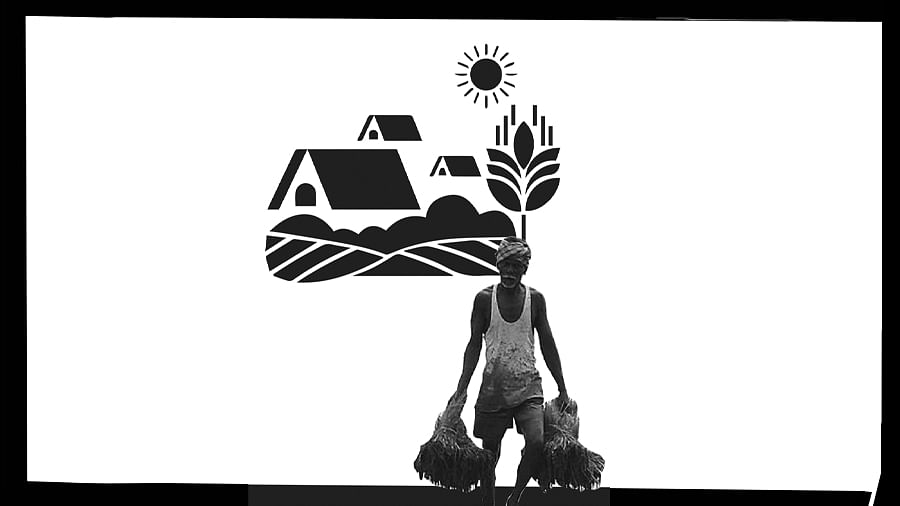
Agriculture as a profession is undergoing a major transformation globally, almost bordering on a civilisational change. The number of farms in the world is rapidly declining, while farm sizes are increasing. Farmers, who have been engaged in agriculture for generations, are being pushed out of their vocation due to cataclysmic changes taking place all around. Does this imply the consolidation of farming in the hands of a few? What does it portend for India, in particular, and the world at large?
When foraging men decided to settle down and farm, something that happened more than 15,000 years ago, it was a need-based activity. Today, it is a multi-trillion-dollar enterprise with 600 million farms scattered all over the world, feeding the world’s eight billion people. However, this vocation is changing rapidly.
Recently, a researcher from the University of Colorado in the United States analysed the number and size of farms in 180 countries around the world from 1969 to 2013 and used the trend to forecast the situation by 2100. The results of this investigation published in Nature Sustainability found that by 2100, the number of farms in the world would halve, while the size of farms would double. In the US and Europe, this trend has been observed for quite some time now. The Economic Research Service of the US Department of Agriculture (USDA) says, “Early 20th century agriculture was labour intensive, and it took place on many small-sized farms, which cultivated a variety of crops, in rural areas. Agricultural production in the 21st century, on the other hand, is concentrated on a smaller number of large-sized specialised farms in rural areas where less than a fourth of the US population lives.” The number of farms in the US has been declining since 1982, from 2.20 million in 2007 to two million in 2022. That is a 9.1% reduction. This, indeed, is a huge reduction in the number of farms.
In sharp contrast to this picture, the average farm size increased from 176 hectares in the 1970s to 178 hectares by 2022.
The University of Colorado Boulder investigation forecasts that farm creation will stop and consolidation will set in by 2050 in Asia, West Asia, North Africa, Oceania, Latin America, and the Caribbean, while Sub-Saharan Africa will witness a change towards the end of the 21st century. In these regions, agriculture is the dominant employer, with the majority of the farmers being small landholders. Even if the number of farms remains unchanged, the investigation warns that fewer people will own land and farms.
What are the consequences of the change? There are three key consequences.
Consolidation of farming in the hands of a few, probably by big corporations or very powerful individuals.
Large farms mean a rise in monoculture and a steep reduction in crop diversity, which will severely impact overall food and nutrition security, the consequences of which have been discussed by this author in his book Biodiversity in Agriculture: Sustainability of Soil, Soil Fauna, and Soil Flora.
The farm sector will become more susceptible to economic risks. For example, if one is investing in today’s food systems, with around 600 million farms in the world, one’s portfolio is diverse. If there is damage to one farm due to any environmental hazard, it is most likely that the impact of the damage will be averaged out with the success of another. But if one decreases the number of farms and increases their size, the effect of the shock on one’s portfolio will be significant. One carries a lot more financial risk.
What does the change portend for India? For India, and for that matter, most of the poor and developing countries in Asia, Africa, and North America, this is a change never imagined. Therefore, the countries are unprepared to face the consequences. Will the few producers controlling our farms also control our food and nutrition security? The example of mango farming is an illustration of this danger. India’s largest mango orchard is owned by Reliance in Jamnagar, Gujarat. In other words, the mango price in India can be controlled by Reliance’s Chairman, Mukesh Ambani. In such a scenario, a small-scale owner of a mango farm in India will simply be wiped out of the market.
The number of operational farm holdings in India has been increasing from 71 million land holdings in 1971, and it has been fragmented into 146.5 holdings, according to the latest available Agriculture Census of 2015–2016. This small size of the landholdings is the principal cause of low crop yield and explains the unilateral
focus of agricultural policies to boost
crop productivity. This must change once India starts reflecting on the
global trend.
The fact is that agriculture still contributes significantly to the economies of poor and developing countries, such as India. In India, the potential of agriculture to reduce poverty and hunger has been much greater than that of other sectors such as industry and services. Hence, the big questions are: if agriculture gets consolidated into the hands of a few, will the non-farm sectors be able to absorb the millions moving out of the farm sector? Will the few producers then also control India’s food and nutrition security? The case with the Ambani mango farm is a pointer to the shape of things that can emerge in India.
(The writer was formerly Professor, National Science Foundation, Royal Society, Belgium)